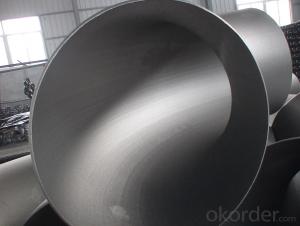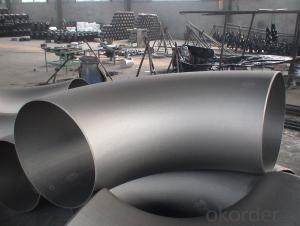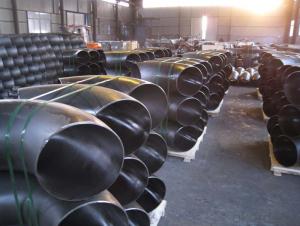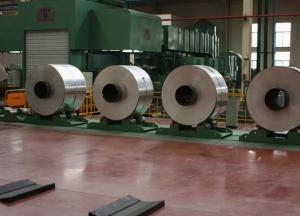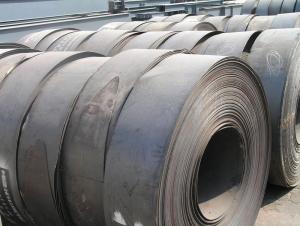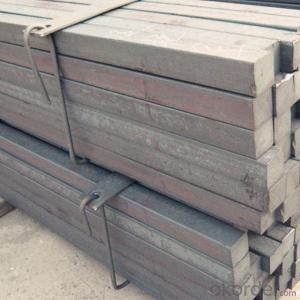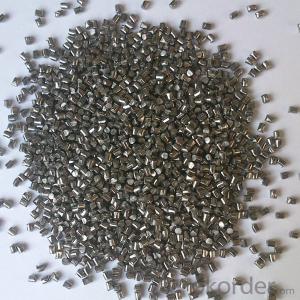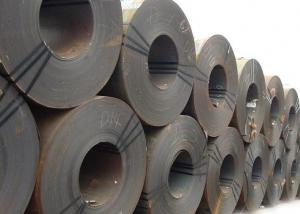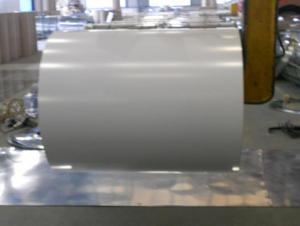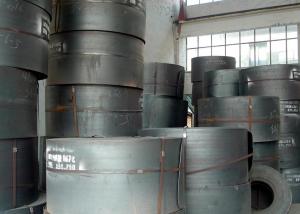Carbon steel pipe fittings ELBOW 1/2''-42''
- Loading Port:
- China Main Port
- Payment Terms:
- TT OR LC
- Min Order Qty:
- -
- Supply Capability:
- -
OKorder Service Pledge
OKorder Financial Service
You Might Also Like
Pipe fitting is the occupation of installing or repairing piping or tubing systems that convey liquid, gas, and occasionally solid materials. This work involves selecting and preparing pipe or tubing, joining it together by various means, and the location and repair of leaks.
Pipe fitting work is done in many different settings: HVAC, manufacturing, hydraulics, refineries, nuclear-poweredSupercarriers and Fast Attack Submarinescomputer chip fab plants, power plant construction and other steam systems. Pipe fitters (sometimes called simply "fitters") are represented in the USA and Canada by the United Association of Journeymen and Apprentices of the Plumbing and Pipe Fitting Industry of the United States and Canada.
Fitters work with a variety of pipe and tubing materials including several types of steel, copper, iron, aluminium, and plastic. Pipe fitting is not plumbing; the two are related but separate trades. Pipe fitters who specialize in fire prevention are called Sprinklerfitters, another related, but separate trade.
Materials, techniques, and usages vary from country to country as different nations have different standards to install pipe.
Elbow are an English alternative rock band consisting of Guy Garvey (vocals, guitar), Richard Jupp (drums, percussion), Craig Potter (keyboards, piano), Mark Potter (guitar, backing vocals), and Pete Turner (bass guitar, backing vocals). They have played together since 1990, adopting the Elbow band name in 1997, and have released six studio albums: Asleep in the Back (2001), Cast of Thousands (2003), Leaders of the Free World (2005), The Seldom Seen Kid (2008), Build a Rocket Boys! (2011), and The Take Off and Landing of Everything (2014). All of their studio albums, as well as B-sides compilation Dead in the Boot (2012), have placed in the top 15 of the British album chart and seven of their singles have placed in the top 40 of the British singles chart.
In 2008 Elbow won the Mercury Music Prize for their album The Seldom Seen Kid, and in 2009 they won the Brit Award for Best British Group In 2012 they released "First Steps", the BBC theme for the 2012 London Olympics
Specifications
Standard: ASTM A234 WPB, JIS, DIN, EN, GOST
Use for Oil, Gas, Subwatering act.
45/90/180 degree, LR/SR Elbow
ASTM A234 WPB ELBOW :
| ||||||||
| we are manufacturer for carbon steel pipe and fittings,like 45deg,90deg,180deg,L/R OR S/R,bend , | ||||||||
| equal or reducing tee, CON reducer, ECC reducer, pipe cap,flange. | ||||||||
| CON AND ECC REDUCER: CARBON STEEL,STAINLESS,STELL,ALLOY STEEL | ||||||||
| NOMINAL DIAMETER | BIG OD1 | SMALL OD2 | HEIGHT(MM) | |||||
| MM | SERIES A | SERIES B | SERIES A | SERIES B | 51-711 | |||
| 25*15--1500*1400 | 33.7-1524 | 32-1520 | 21.3-1420 | 18-1420 | ||||
| MATERIAL: A234WPB,A283,A105,A53,A106,API5L | ||||||||
| STANDARD: ASTM/ANSI,DIN,ISO,GB,JIS,BS ,GOST | ||||||||
| OTHERS: | ||||||||
| 1. Special design available according to requirement | ||||||||
| 2. All the production process are made under the ISO 9001:2000 strictly. | ||||||||
- Q:What are the applications of stainless steel in the food industry?
- Stainless steel has numerous applications in the food industry due to its unique properties. It is commonly used in food processing, storage, and equipment manufacturing. Its corrosion resistance makes it ideal for food contact surfaces, ensuring hygiene and preventing contamination. Stainless steel is used in the production of utensils, sinks, countertops, and appliances due to its durability, easy cleaning, and resistance to heat and chemicals. It is also used in food transportation, such as tanks and containers, as it maintains the quality and integrity of the food during transit.
- Q:What are the safety precautions to be followed when handling steel products?
- When handling steel products, it is important to follow several safety precautions to ensure the well-being of individuals. Firstly, wearing personal protective equipment (PPE) such as gloves, safety glasses, and steel-toed boots is crucial to protect against cuts, abrasions, and impacts. Additionally, it is essential to use proper lifting techniques and equipment to avoid strains or injuries. Maintaining a clean and organized work area helps prevent slips, trips, and falls. Furthermore, handling sharp or jagged edged steel with care and using appropriate tools for cutting or shaping minimizes the risk of cuts or punctures. Lastly, it is advised to be cautious of heavy loads and ensure proper equipment is used for lifting and transporting steel products.
- Q:How are steel plates used in shipbuilding?
- Steel plates are used in shipbuilding to provide structural support and strength to the ship's hull. They are often used to construct the ship's outer shell, known as the hull, as well as bulkheads, decks, and other components. Steel plates are welded together to form the ship's structure, ensuring its integrity and ability to withstand the harsh conditions of the sea.
- Q:What are the different types of steel gratings and their applications?
- There are several types of steel gratings, including welded steel grating, press-locked steel grating, and riveted steel grating. Welded steel grating is commonly used for industrial flooring, catwalks, and stair treads due to its durability and strength. Press-locked steel grating is often used for architectural and decorative purposes, such as walkways, platforms, and sunscreens. Riveted steel grating is suitable for heavy-duty applications such as bridge decking, truck platforms, and loading docks.
- Q:How is steel tubing used in heat exchangers?
- Steel tubing is commonly used in heat exchangers due to its excellent thermal conductivity and durability. It is employed to create the primary heat transfer surface within the heat exchanger, allowing efficient transfer of heat from one fluid to another. The steel tubing's high strength and resistance to corrosion ensure the heat exchanger's longevity and reliability, making it a preferred choice in various industrial applications.
- Q:How is steel used in the energy sector, such as in power plants?
- Steel is widely used in the energy sector, particularly in power plants, due to its strength, durability, and heat resistance properties. It is used for constructing power plant infrastructure, such as the supporting framework, turbine components, boilers, and pipelines. Steel is also used in the manufacturing of power transmission towers and electrical transformers. Its versatility and ability to withstand high temperatures make it a crucial material in the energy sector.
- Q:Can steel be used in the production of food-grade equipment?
- Yes, steel can be used in the production of food-grade equipment. Stainless steel, in particular, is commonly used due to its corrosion resistance, durability, and ease of cleaning. It is safe for direct contact with food and meets the hygiene and safety standards required for food production.
- Q:How are steel sheets used in the manufacturing of solar panels?
- Steel sheets are commonly used in the manufacturing of solar panels as a structural component to provide support and stability. They are typically used to create the framework or frame for the solar panels, which helps to hold and position the various components, such as the photovoltaic cells, glass cover, and electrical wiring. Steel sheets are chosen for their strength, durability, and ability to withstand various weather conditions, ensuring the longevity and reliability of solar panels.
- Q:What are the common uses of steel pipes and tubes?
- Steel pipes and tubes have a wide range of common uses across various industries. They are frequently used for transporting fluids and gases in plumbing, heating, and cooling systems. Additionally, steel pipes and tubes are widely employed in the construction industry for structural purposes, such as supporting buildings, bridges, and infrastructure. Other common applications include oil and gas pipelines, automotive manufacturing, and the production of machinery and equipment.
- Q:What are the advantages of using steel wire?
- There are several advantages of using steel wire. Firstly, steel wire is incredibly strong and durable, making it suitable for a wide range of applications. It can withstand heavy loads, resist deformation, and maintain its structural integrity over time. Secondly, steel wire has high tensile strength, meaning it can withstand pulling forces without breaking. This makes it ideal for use in industries such as construction, automotive, and manufacturing. Additionally, steel wire is resistant to corrosion, which increases its lifespan and reduces maintenance costs. Lastly, steel wire is flexible and versatile, allowing it to be easily shaped and manipulated for various purposes. Overall, the advantages of using steel wire include its strength, durability, resistance to corrosion, and versatility.
1. Manufacturer Overview |
|
|---|---|
| Location | |
| Year Established | |
| Annual Output Value | |
| Main Markets | |
| Company Certifications | |
2. Manufacturer Certificates |
|
|---|---|
| a) Certification Name | |
| Range | |
| Reference | |
| Validity Period | |
3. Manufacturer Capability |
|
|---|---|
| a)Trade Capacity | |
| Nearest Port | |
| Export Percentage | |
| No.of Employees in Trade Department | |
| Language Spoken: | |
| b)Factory Information | |
| Factory Size: | |
| No. of Production Lines | |
| Contract Manufacturing | |
| Product Price Range | |
Send your message to us
Carbon steel pipe fittings ELBOW 1/2''-42''
- Loading Port:
- China Main Port
- Payment Terms:
- TT OR LC
- Min Order Qty:
- -
- Supply Capability:
- -
OKorder Service Pledge
OKorder Financial Service
Similar products
New products
Hot products
Related keywords
